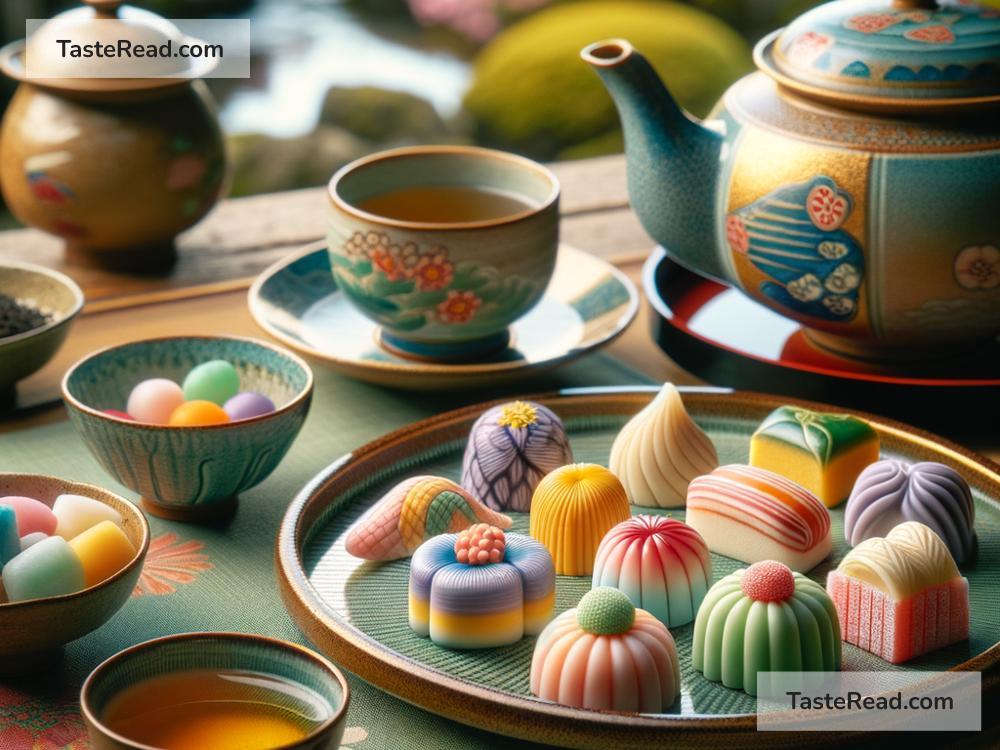Exploring the Delicate Art of Japanese Wagashi Sweets
Japanese cuisine is known worldwide for its sushi, tempura, and ramen. But there’s a lesser-known art form in the Japanese culinary world that deserves a spotlight of its own: Wagashi. Wagashi are traditional Japanese sweets, meticulously crafted to delight not just the palate but the eyes as well. They are the epitome of the Japanese aesthetic, embodying simplicity, elegance, and a deep connection to nature. Let’s dive into the delicate world of Wagashi and discover why these sweet treats are so much more than just a dessert.
Origins and History
The story of Wagashi dates back over a thousand years, rooted deeply in Japan’s cultural and historical landscape. Originally, Wagashi were simple sweets made from fruits and nuts. However, as tea became a popular beverage, these sweets evolved into sophisticated companions to the bitter matcha tea, served during traditional tea ceremonies. The art of making Wagashi flourished during the Edo period (1603-1868), with confectioners competing to create the most exquisite and intricate designs.
Types of Wagashi
Wagashi come in a bewildering variety of shapes, textures, and flavors, often inspired by the changing seasons and natural beauty of Japan. Here are some of the most popular types:
-
Mochi: Soft and chewy, mochi is made from glutinous rice pounded into a paste and shaped. It can be filled with sweet red bean paste or just enjoyed plain.
-
Dorayaki: These are like small pancake sandwiches filled with sweet red bean paste, a favorite of children and adults alike.
-
Anmitsu: A refreshing dessert bowl that combines agar jelly, fruits, red bean paste, and a dollop of sweet syrup.
-
Daifuku: Similar to mochi but filled with a sweet filling and often dusted with a coating, such as powdered sugar.
The Seasonal Nature of Wagashi
One of the most fascinating aspects of Wagashi is how they reflect the seasons. Japanese culture has a deep respect for the changing seasons, and Wagashi artisans use their craft to express this cyclical nature. Spring brings the soft pink hues of cherry blossoms into Wagashi designs, summer is represented with vibrant green motifs, autumn with warm oranges and browns, and winter with delicate whites and grays. These seasonal changes are not just about looks; they also influence the flavors, with each season boasting its unique ingredients.
The Making of Wagashi
The creation of Wagashi is considered an art form, requiring years of training and a gentle hand. Ingredients are simplistic, often centering around sweetened red bean paste, rice flour, and agar-agar, but the magic lies in the transformation. Using tools that have remained unchanged for centuries, artisans shape these ingredients into miniature masterpieces reflecting nature, poetry, or seasonal motifs. The process is meditative and requires both creativity and precision.
Experiencing Wagashi
For those looking to experience Wagashi, there’s no better place than Japan, where these sweets can be found in traditional tea houses, specialty sweet shops, and even convenience stores. However, the ultimate Wagashi experience is undoubtedly the Japanese tea ceremony, where the ritual of making and drinking matcha is accompanied by the indulgence in Wagashi, creating a moment of harmony and reflection.
Even outside Japan, Wagashi is becoming increasingly available, with workshops, online tutorials, and specialty shops popping up around the world, offering a taste of this delicate art form.
The Cultural Significance
More than just a sweet treat, Wagashi are a window into Japanese culture, embodying the values of respect, harmony, and the beauty of the moment. They teach us to pause, reflect, and appreciate the transient beauty of nature and the seasons. In a fast-paced world, the art of Wagashi reminds us of the importance of mindfulness and the joy found in small, simple pleasures.
In conclusion, Wagashi are much more than mere sweets. They are an expression of Japanese culture, art, and philosophy. Their delicate flavors, intricate designs, and seasonal significance make them a unique culinary experience that transcends boundaries and invites us to explore the richness of Japanese traditions. Whether you’re sipping matcha in a tea ceremony or enjoying a Wagashi-inspired dessert in your own home, these sweets offer a moment of beauty and tranquility, a delicious reminder to savor the simple joys of life.


